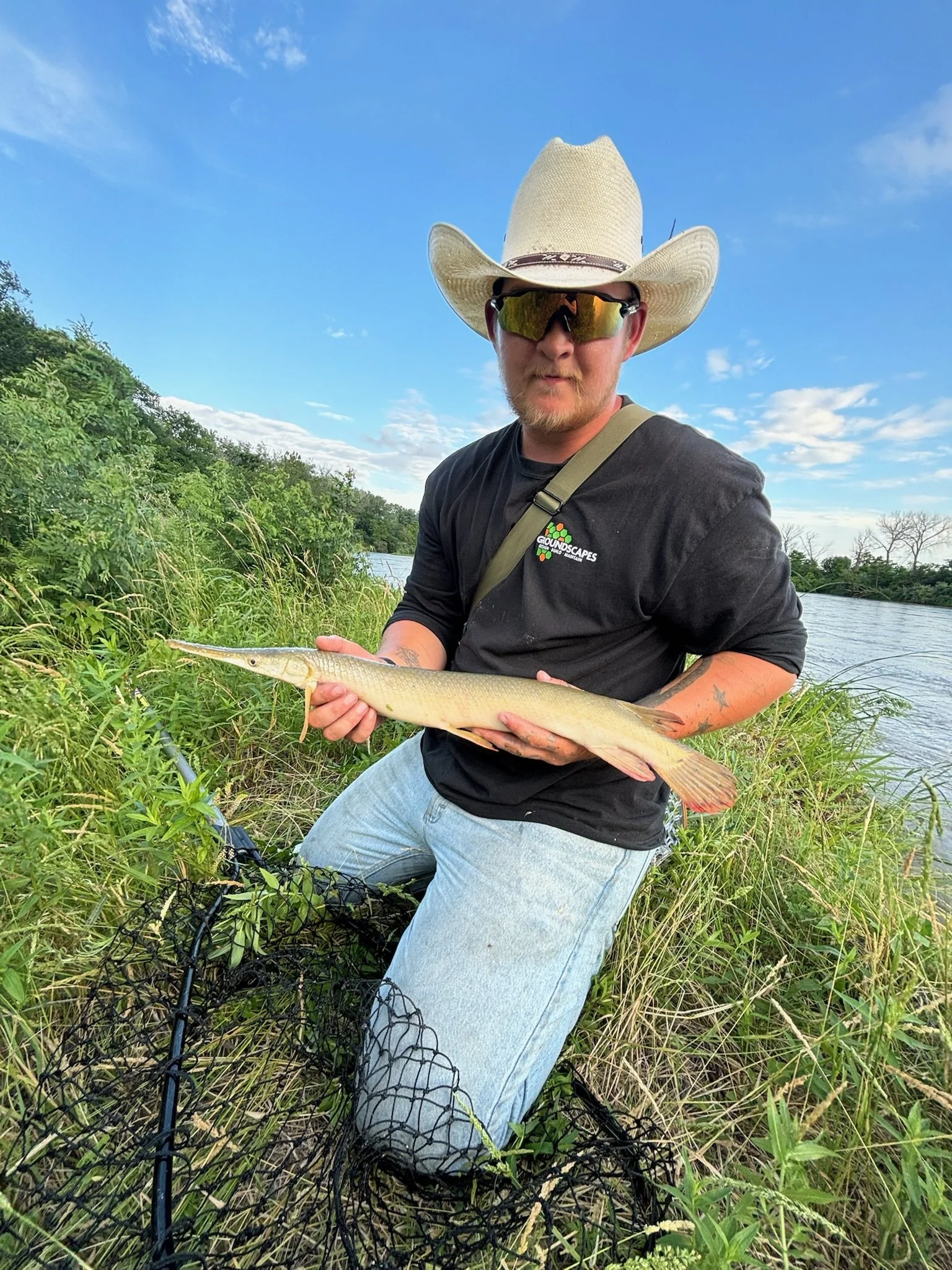Gar
In Nebraska, gar are represented by two native species: the longnose gar and the shortnose gar—with occasional hybrids between them
Missouri River and its tributaries (eastern Nebraska): Both longnose and shortnose gar are common, especially in calmer sections, side channels, and backwaters .
Sandpits and oxbow lakes connected to major rivers: These quiet, shallow waters provide ideal habitat for gar .
-
Gar are ambush predators with long, tooth-filled snouts designed to snatch fast-moving prey. In Nebraska, both longnose gar and shortnose gar feed on a variety of animals, mostly other fish.
Primary Diet
Small fish – Their favorite food, including:
Shad
Minnows
Sunfish
Carp and young game fish
Crustaceans – Like crayfish (occasionally)
Insects – Especially aquatic larvae when young
Amphibians – Frogs or tadpoles, if they’re slow enough
-
Gar spawn in late spring to early summer, typically when water temperatures reach around 68–80°F (20–27°C). In Nebraska, this usually happens between May and early July, depending on the weather and the water body.
-
In Nebraska, you can catch gar—primarily longnose and shortnose gar—in warm, slow-moving waters with plenty of structure. They thrive in backwaters, oxbows, sloughs, and side channels of large rivers, especially in the eastern part of the state.
1. Missouri River (Eastern Nebraska)
Best spot in the state for big gar, including state records
Focus on backwater sloughs, slow side channels, and areas with submerged logs or riprap
Fish near Omaha, Nebraska City, or Rulo
2. Platte River (Lower sections)
Gar are common in the slower-moving stretches
Look for sandbars, undercut banks, and side pools
3. Elkhorn River
Especially around backwater pools and oxbows near the confluence with the Platte
Great spot for shortnose gar
4. Sandpit Lakes and Oxbows near Rivers
Many sandpits and oxbow lakes near the Missouri and Platte Rivers hold gar
Examples: Lake Wanahoo, Lake Wehrspann, and sandpits near Fremont or Ashland
5. Flooded Ditches and Sloughs (Spring/Summer)
During high water, gar often move into flooded vegetation, ditches, and shallow coves to spawn or feed

